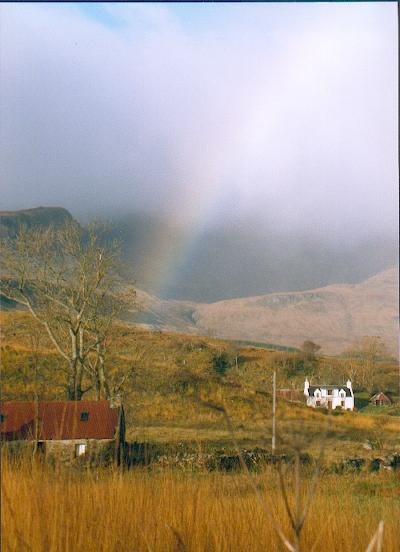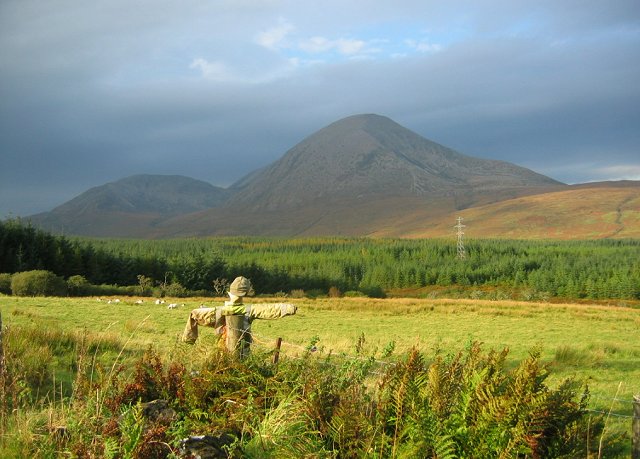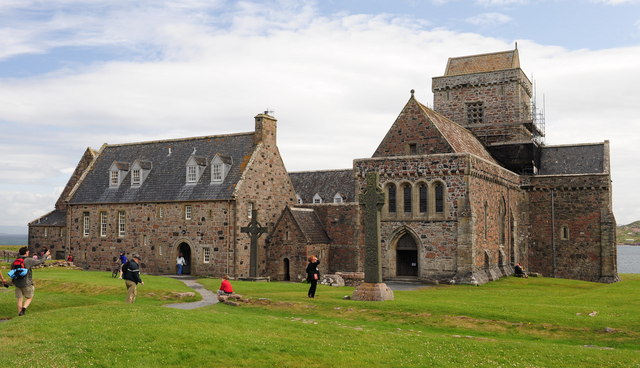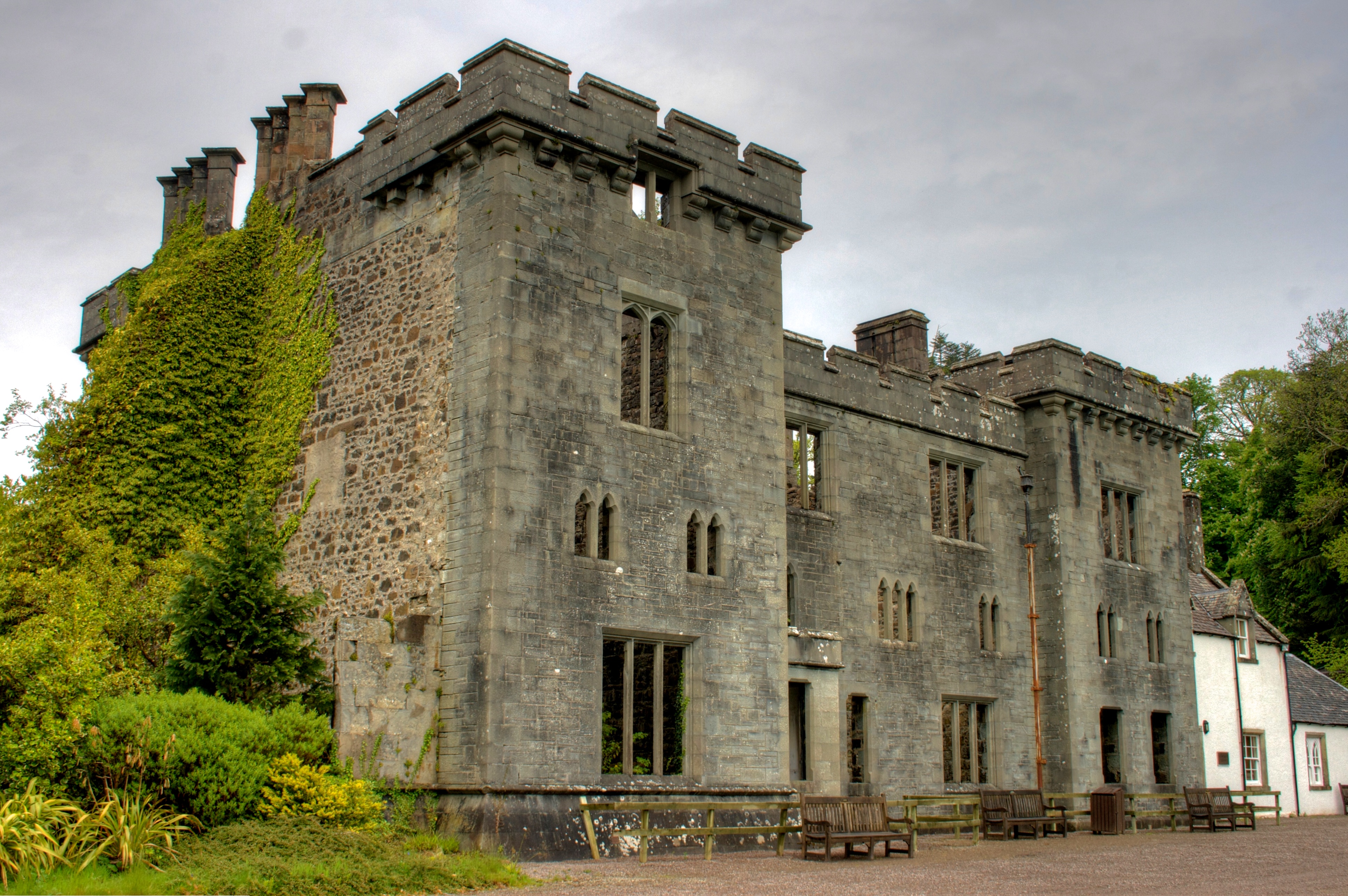|
Torrin
Torrin ( gd, Na Torrain) is a settlement on the island of Skye in Scotland. Geography The crofting and fishing village of Torrin lies on the eastern shore of Loch Slapin, southwest of Broadford (''An t-Àth Leathann''), on the road to Elgol (''Ealaghol''). There is a mixture of Victorian white-washed cottages and modern flat-pack houses, and the village has good views of Blaven and Loch Slapin. Torrin sits on dolomites, informally referred to collectively as the "Durness Limestone". There is an abundance of trees and varied plant flora, including more than a dozen species of orchids. Much of the area is designated a Site of Special Scientific Interest and a Special Area of Conservation. There are five working crofts in Torrin with cattle and sheep. The common grazing extends north onto the surrounding red granite hills Beinn Dearg Mhòr (709m) and Beinn Dearg Bheag (584m) and beyond the head of Loch Slapin. Marble Skye marble has been extracted from Strath Suardal f ... [...More Info...] [...Related Items...] OR: [Wikipedia] [Google] [Baidu] |
Strathaird
Strathaird is a peninsula on the island of Skye, Scotland, situated between Loch Slapin and Loch Scavaig on the south coast. W. H. Murray said that "Skye is sixty miles long, but what might be its breadth is beyond the ingenuity of man to state". Strathaird is however a straightforward triangular shape with the apex to the south where the lochs meet. Its base to the north is less clear-cut and is contained within the complex of the Cuillin range of mountains. The Munro Blà Bheinn that reaches is within Strathaird. It is the smallest and least populous of Skye's main peninsulas, containing only the hamlets of Elgol, Kirkibost, Kilmarie, Drinan and Glasnakille, which are accessed via the B8083 road. The ruins of the Iron Age hill fort Dun Ringill are east of Kirkibost on the shores of Loch Slapin. The Strathaird peninsula was historically a heartland of Clan Mackinnon and tradition holds that Dun Ringill was once the seat of the clan. The Strathaird Estate was bought by musi ... [...More Info...] [...Related Items...] OR: [Wikipedia] [Google] [Baidu] |
Cill Chriosd
Cill Chriosd or Kilchrist (Christ's Church) is a ruined former parish church of Strath, on the Isle of Skye, Scotland. It was constructed around the 16th century, replacing an earlier medieval church on the same location, and was used until 1840 when the parish church was relocated to Broadford. It lies on the B8083 Broadford to Torrin and Elgol road. __NOTOC__ Layout The ruins of the church lie at the top of a small mound, surrounded by the graveyard. It has been described by Miers as follows: "The long, low, rubble ruin of the post-Reformation parish church of Strath has roughly dressed quoins and jambs, and a balustraded burial enclosure added to the east gable in the early 18th century for the Mackinnons." The church doorway, in the south wall, has splayed jambs and check and square . The south wall also has three windows, with check and inward splay; the east gable has a similar window, which is now built up. The insides measure by . The side walls are tall and ... [...More Info...] [...Related Items...] OR: [Wikipedia] [Google] [Baidu] |
Skye
The Isle of Skye, or simply Skye (; gd, An t-Eilean Sgitheanach or ; sco, Isle o Skye), is the largest and northernmost of the major islands in the Inner Hebrides of Scotland. The island's peninsulas radiate from a mountainous hub dominated by the Cuillin, the rocky slopes of which provide some of the most dramatic mountain scenery in the country. Slesser (1981) p. 19. Although has been suggested to describe a winged shape, no definitive agreement exists as to the name's origins. The island has been occupied since the Mesolithic period, and over its history has been occupied at various times by Celtic tribes including the Picts and the Gaels, Scandinavian Vikings, and most notably the powerful integrated Norse-Gaels clans of MacLeod and MacDonald. The island was considered to be under Norwegian suzerainty until the 1266 Treaty of Perth, which transferred control over to Scotland. The 18th-century Jacobite risings led to the breaking-up of the clan system and later c ... [...More Info...] [...Related Items...] OR: [Wikipedia] [Google] [Baidu] |
Broadford, Skye
Broadford ( gd, An t-Àth Leathann), together with nearby Harrapool, is the second-largest settlement on the Isle of Skye, Scotland. Lying in the shadow of the Red Cuillin mountains, Broadford is within the parish of Strath. A long meandering village historically consisting of a few buildings on either side of the Broadford River, the many small townships around the wide sweep of the bay have grown together and Broadford now stretches for around the southern side of Broadford Bay. History Like many places in Skye, Broadford derives its name from Old Norse. To the Vikings, this was ''Breiðafjorðr'' – the wide bay. The Gaelic name is of modern derivation and assumes that the "ford" element meant a river crossing. West of Broadford in Glen Suardal, on the lower slopes of Beinn na Caillich, is Goir a' Bhlàir, 'the field of battle' ( ). The battle concerned was apparently a decisive action by the Gaelic Clan Mackinnon against the Norsemen. From the late 1700s Broadford ... [...More Info...] [...Related Items...] OR: [Wikipedia] [Google] [Baidu] |
Royal Marines
The Corps of Royal Marines (RM), also known as the Royal Marines Commandos, are the UK's special operations capable commando force, amphibious light infantry and also one of the five fighting arms of the Royal Navy. The Corps of Royal Marines can trace their origins back to the formation of the "Duke of York and Albany's maritime regiment of Foot" on 28 October 1664, and can trace their commando origins to the formation of the 3rd Special Service Brigade, now known as 3 Commando Brigade on 14 February 1942, during the Second World War. As a specialised and adaptable light infantry and commando force, Royal Marine Commandos are trained for rapid deployment worldwide and capable of dealing with a wide range of threats. The Corps of Royal Marines is organised into 3 Commando Brigade and a number of separate units, including 47 Commando (Raiding Group) Royal Marines, and a company-strength commitment to the Special Forces Support Group. The Corps operates in all environments an ... [...More Info...] [...Related Items...] OR: [Wikipedia] [Google] [Baidu] |
Scottish Gaelic
Scottish Gaelic ( gd, Gàidhlig ), also known as Scots Gaelic and Gaelic, is a Goidelic language (in the Celtic branch of the Indo-European language family) native to the Gaels of Scotland. As a Goidelic language, Scottish Gaelic, as well as both Irish and Manx, developed out of Old Irish. It became a distinct spoken language sometime in the 13th century in the Middle Irish period, although a common literary language was shared by the Gaels of both Ireland and Scotland until well into the 17th century. Most of modern Scotland was once Gaelic-speaking, as evidenced especially by Gaelic-language place names. In the 2011 census of Scotland, 57,375 people (1.1% of the Scottish population aged over 3 years old) reported being able to speak Gaelic, 1,275 fewer than in 2001. The highest percentages of Gaelic speakers were in the Outer Hebrides. Nevertheless, there is a language revival, and the number of speakers of the language under age 20 did not decrease between the 2001 ... [...More Info...] [...Related Items...] OR: [Wikipedia] [Google] [Baidu] |
Agricultural Lime
Agricultural lime, also called aglime, agricultural limestone, garden lime or liming, is a soil additive made from pulverized limestone or chalk. The primary active component is calcium carbonate. Additional chemicals vary depending on the mineral source and may include calcium oxide. Unlike the types of lime called quicklime (calcium oxide) and slaked lime (calcium hydroxide), powdered limestone does not require lime burning in a lime kiln; it only requires milling. All of these types of lime are sometimes used as soil conditioners, with a common theme of providing a base to correct acidity, but lime for farm fields today is often crushed limestone. Historically, liming of farm fields in centuries past was often done with burnt lime; the difference is at least partially explained by the fact that affordable mass-production-scale fine milling of stone and ore relies on technologies developed since the mid-19th century. Some effects of agricultural lime on soil are: * it in ... [...More Info...] [...Related Items...] OR: [Wikipedia] [Google] [Baidu] |
Iona Abbey
Iona Abbey is an abbey located on the island of Iona, just off the Isle of Mull on the West Coast of Scotland. It is one of the oldest Christian religious centres in Western Europe. The abbey was a focal point for the spread of Christianity throughout Scotland and marks the foundation of a monastic community by St. Columba, when Iona was part of the Kingdom of Dál Riata. Saint Aidan served as a monk at Iona, before helping to reestablish Christianity in Northumberland, on the island of Lindisfarne. Iona Abbey is the spiritual home of the Iona Community, an ecumenical Christian religious order, whose headquarters are in Glasgow. The Abbey remains a popular site of Christian pilgrimage today. History Early history In 563, Columba came to Iona from Ireland with twelve companions, and founded a monastery. It developed as an influential centre for the spread of Christianity among the Picts and Scots. At this time the name of the island and so the abbey was "Hy" or "Hii"; "Io ... [...More Info...] [...Related Items...] OR: [Wikipedia] [Google] [Baidu] |
Armadale Castle
Armadale Castle is a ruined country house in Armadale, Skye, former home of the MacDonalds. A mansion house was first built here around 1790, facing south-east over the Sound of Sleat. In 1815 a square Tudor-Gothic mock-castle, intended for show rather than defence, designed by Edinburgh architect James Gillespie Graham, was built next to the house. After 1855 the part of the house destroyed by fire was replaced by a central wing, designed by David Bryce David Bryce FRSE FRIBA RSA (3 April 1803 – 7 May 1876) was a Scottish architect. Life Bryce was born at 5 South College Street in Edinburgh, the son of David Bryce (1763–1816) a grocer with a successful side interest in building. .... Since 1925 the castle, abandoned by the Macdonald family, has fallen into ruin. The gardens around the castle have been maintained, and are now home to the Clan Donald Centre, which operates the Museum of the Isles. All the southern (Gillespie-Graham) sections of the building w ... [...More Info...] [...Related Items...] OR: [Wikipedia] [Google] [Baidu] |
Lime (material)
Lime is a calcium-containing inorganic material composed primarily of oxides and hydroxide, usually calcium oxide and/or calcium hydroxide. It is also the name for calcium oxide which occurs as a product of coal-seam fires and in altered limestone xenoliths in volcanic ejecta. The International Mineralogical Association recognizes lime as a mineral with the chemical formula of CaO. The word ''lime'' originates with its earliest use as building mortar and has the sense of ''sticking or adhering''. These materials are still used in large quantities as building and engineering materials (including limestone products, cement, concrete, and mortar), as chemical feedstocks, and for sugar refining, among other uses. Lime industries and the use of many of the resulting products date from prehistoric times in both the Old World and the New World. Lime is used extensively for wastewater treatment with ferrous sulfate. The rocks and minerals from which these materials are derived, ty ... [...More Info...] [...Related Items...] OR: [Wikipedia] [Google] [Baidu] |









